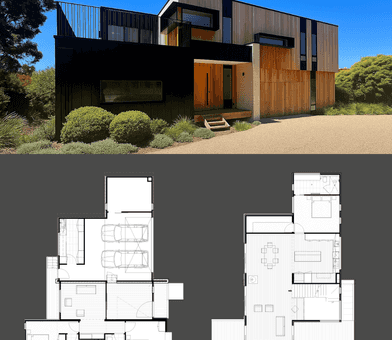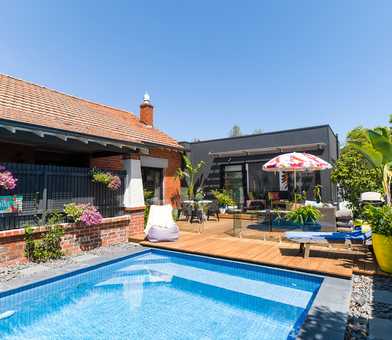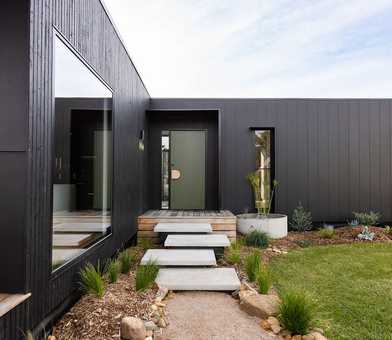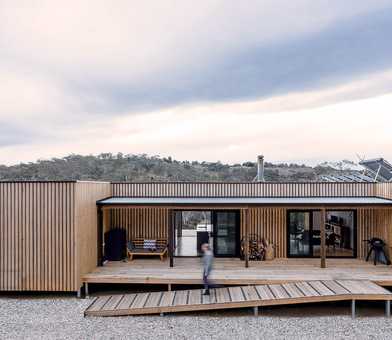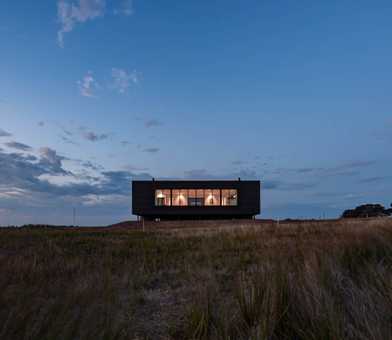The growing construction waste issue
The Australian construction industry produces an eye-watering 12.7 million tonnes (Mt) of waste each year or 16.8% of the country’s total solid waste, according to the latest Australian Bureau of Statistic (ABS) Waste Account release.
All that waste produces greenhouse gases, releases harmful substances into the environment and eats up large areas of land for processing, treatment and landfilling.
It comes as no surprise that ABS data shows construction is the second-highest waste generating industry in Australia and spends $2 billion on waste services every year – the most out of any sector.
Construction and demolition waste isn’t just a problem in Australia. Research shows the construction industry produces approximately 25% of all solid waste globally where 40% of material sitting in landfills is the result of construction activities. These statistics should compel us to be more conscious of how we dispose of waste from building sites and minimise it where possible.
Knowing construction waste is continuing to increase (+22% since the previous ABS report) and that it has such a massive cost financially not to mention its huge environmental impact, what can builders and consumers do to manage waste and minimise how much is generated by their chosen construction methods and building projects?
In this journal article, we will define construction waste, find out where it ends up after it leaves the building site and look at a viable solution that can significantly reduce it.

What is construction waste?
In Mohamed Osmani’s book Waste it was estimated that a typical build site’s waste can be as high as 30% of the total weight of the building materials delivered to the site. But what exactly do we mean by ‘construction waste’ and what kinds of materials is it made up of?
The Environment Protection Authority Victoria defines construction waste as ‘waste coming from building and renovating homes. It can include: timber, concrete, bricks, plasterboards, asbestos, asphalt, rocks and soil, vegetation and contaminated soil’. For more on sustainable building check out our guide to sustainable renovations.
EPA Victoria warns, ‘if you don’t manage construction and demolition waste in the right way, it can harm human health and the environment’.
The latest National Waste Report by the Department of Agriculture, Water and the Environment, shows around 44% (27 Mt) of the 74.1 Mt of waste produced in Australia was from the construction and demolition sector.
Typical types of waste generated from construction
According to a Department of Environment and Climate Change NSW audit the breakdown of construction waste disposed to landfill as a percentage of total weight consists of:
- Asbestos 24.7%
- Contaminated soil 21.1%
- Concrete 16.6%
- Soil 8.6%
- Fines (all material from mixed construction and demolition waste that are less than 4.75mm in size) 7.4%
- Timber 7.1%
- Clay products 3%
- Other 11.4% (plastic 1%, natural aggregate 1.9%, vegetation, 1.9%, ferrous materials 1.7%, plasterboard 1.3%, paper and cardboard 1.1%)
Where does construction and demolition waste go?
Now that we know what we mean by construction waste and what it is made up of, let’s take a look at waste disposal and where a majority of waste materials end up.
Based on the National Waste Report here is where site waste typically ends up:
- Approximately 20 Mt (76%) goes to construction recycling operations and resource recovery where the materials are commonly used in road bases and other civil projects.
- Approximately 6.5 Mt (24%) landfill disposal.
- Less than 50,000 t goes to hazardous waste treatment facilities.
- Less than 50,000 t is considered litter and illegally dumped.
Over the 13-year period for which data is available, total waste generation increased by 11.3 Mt (18%) and C&D waste grew by 32% per capita. While happily, since the 2016-2017 National Waste report the recycling rate of construction waste has increased by 9%.
However, continuing to increase the recycling rate of construction waste via conventional means is becoming increasingly difficult so other solutions to minimise the amount of waste at the source are needed.
Construction waste management: Plan your build with sustainability in mind
By thoroughly planning your construction project and keeping sustainability and waste reduction front of mind you can drastically reduce the environmental impact and waste generated from your build. Some areas you may like to consider and research before getting started:
- Use sustainably sourced building materials. At Ecoliv, we utilise sustainable plantation timber sourced from Gippsland’s renewable plantations.
- Organise secure storage on-site to protect materials from damage, theft, vandalism or exposure to weather.
- Design using standard dimensions to reduce the amount of off-cuts. As part of our sustainable approach to construction at Ecoliv, we use 900mm building material increments.
- Carefully calculate the amount of building materials you need to avoid over-ordering.
- Opt for recycled materials (i.e. concrete made from recycled aggregate or benchtops made from recycled glass) and reusing materials wherever possible.
- Return excess materials to the supplier.
- Go for prefabricated elements or modules when possible.
The good news is that building sustainably is made easy when partnering with Ecoliv. The Ecoliv team already has the resources and know-how to design and construct to reduce waste.
Opt for modular construction
Could modular construction be the solution to the world’s construction waste problem? Modular construction is where a building is constructed in sections (volumetric modules) under controlled conditions off-site in a prefab construction facility. Modular buildings are transported as complete modules to the site typically with walls, flooring, ceilings, wiring, plumbing and fittings already installed.
Curious to find out more? Check out our comprehensive guide to prefab construction, kit and modular homes.
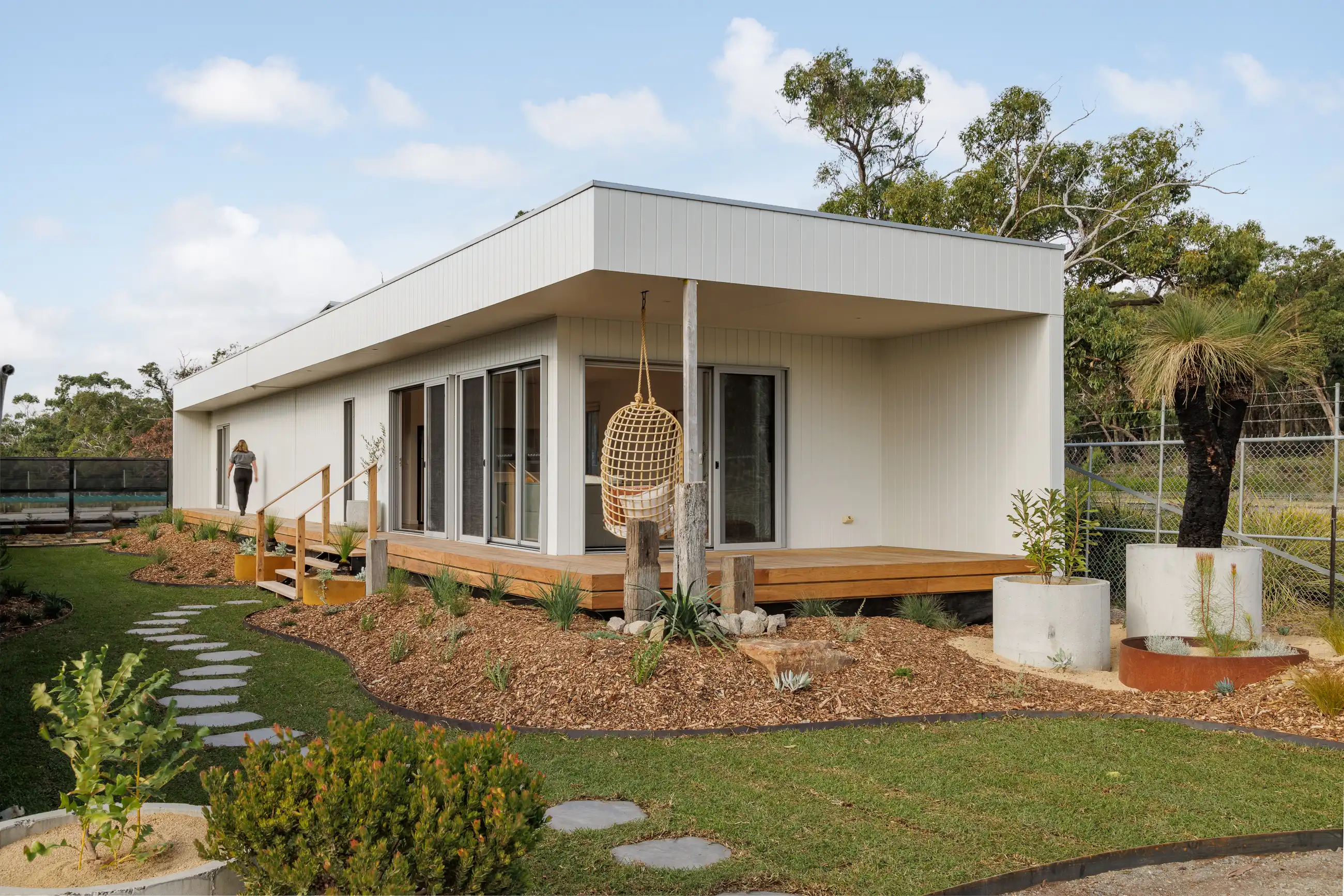
Research shows modular builds reduce the weight of construction waste by up to 83.2%. Visit Ecoliv’s eco-friendly modular display home at The Gurdies, VIC to learn more.
Aside from being a highly resource efficient and quick way to build, modular construction has a significant environmental edge over conventional on-site construction in terms of site disturbance and material wastage.
Let’s take Ecoliv’s modular home design and construction process for example.
Our homes are made up of volumetric modules precision-designed to fit on the back of a truck according to weight requirements and for being craned onto the site. Each module is designed to either make up an entire small dwelling (like our EcoHut range) or combine with other modules to create a larger home (like our EcoLiving, EcoGeneration and EcoSanctuary ranges).
As our volumetric modules are built in a controlled facility there is little site disturbance, less earth moving, and little or no disruption to local flora and fauna. And our lightweight footings allow for maximum site adaptability and minimal excavation and are removable and recyclable.
Ecoliv designs use standard sizes and lengths in building materials resulting in less wastage during the construction process. The prefabrication of frames and trusses reduces material wastage by up to 52%. All excess materials are easily recycled or reused at our construction facility located at The Gurdies on Victoria’s Bass Coast.
We provide clearly marked bins for material separation to ensure all waste is categorised for optimal recyclability and minimal waste going to landfill. Here’s how we recycle and reuse excess materials at our sustainable construction facility – The EcoHub:
Recycled materials:
- Steel, copper and aluminium
- Cardboard and paper
- Plasterboard
- Underlay
- Paint cans
- Electrical cable
- Cement sheet
- Polystyrene
- Untreated timbers
- Treated pine and laminated beams
- PDF, masonite and particle board
- Plastic drums (render, plaster etc.)
- All plastics
Materials reused
- Insulation including sisalation
Materials sent to landfill
- PVC
- Insulation including sisalation that can’t be reused
Further to this, a 2021 University of New South Wales study investigated the difference between the waste generation of off-site modular construction versus on-site conventional construction. This research found a significant reduction in waste weight when modular construction is used, where modular construction reduces the overall weight of waste by up to 83.2%.
While modular construction doesn’t eliminate construction waste, it is certainly a superior sustainable building method for minimising the amount of waste from construction needing to be processed, recycled or sent to landfill.
Work with Ecoliv to minimise construction materials waste in Australia on your next build.
Remember that caring for the environment doesn't stop once your home is built. There are many ways to live sustainably and be carbon neutral through energy efficiency and other sustainability trends to make environmental care a part of your lifestyle.
With over 13 years of experience, Ecoliv is committed to creating sustainable homes that minimise their environmental impact through every stage of the building process from design, construction and installation on site.
If you want to build a new home where your impact on the planet is minimised contact us today to learn more, read our sustainable building guide or book an appointment to visit our display home located at The Gurdies, Victoria.

